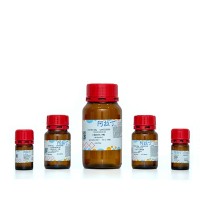G-Wire Synthesis and Modification with Gold Nanoparticle
互联网
互联网
相关产品推荐

CD24/CD24蛋白/(Small cell lung carcinoma cluster 4 antigen) (CD24A)蛋白/Recombinant Human Signal transducer CD24 (CD24)-Nanoparticle (Active)重组蛋白
¥69

铂,7440-06-4,PrimorTrace™, ≥99.99% metals basis, wire reel,5m,diameter 0.125mm,annealed,may be used as one component of a thermocouple,阿拉丁
¥5872.90

Recombinant-Salmonella-paratyphi-A-Cellulose-synthesis-regulatory-proteinSPA0883Cellulose synthesis regulatory protein
¥13846

氧化铁氢氧化物,≥99.5% metals basis, aqueous nanoparticle dispersion, <5nm (DLS), 20% solids by weight, pH ~3,阿拉丁
¥2880.90

Recombinant Human Signal transducer CD24(CD24)-Nanoparticle (Active)
¥2232
相关问答

